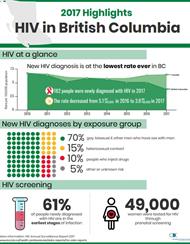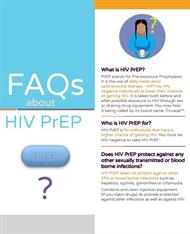This week, you may notice nurses, physicians and staff at the BC Centre for Disease Control’s (BCCDC) sexual health clinics and Oak Tree clinic at BC Women’s Hospital + Health Centre wearing buttons with a red ribbon and the words “You Are” and “I am”.
The buttons were created for World AIDS Day, on December 1, and staff at health authorities across the province and community partners like the
Pacific AIDS Network are wearing them to fight stigma. The message behind the buttons is that those living with HIV are people first. They are lovers, friends, parents, children, neighbours and colleagues.
“Fear of stigma for being diagnosed with HIV prevents people from getting tested and seeking medical care,” said Geoff Ford, senior practice lead for HIV/STI services at BCCDC. “As healthcare providers, we can help people living with HIV feel safer when they access care. One way to do this is by using person-first language that recognizes the person, rather than seeing the illness first.”
Use people-first language
Try saying “living with HIV” instead of “infected with HIV” or “suffers from HIV”
Source: YouthCo
HIV (Human Immunodeficiency Virus) is a chronic disease caused by a viral infection that weakens the immune system and can lead to AIDS. Worldwide, UNAIDS estimates 37.9 million people are living with HIV and 770,000 died of AIDS-related illness in 2018.

In 2017, B.C. noted its lowest rate of new HIV diagnoses on record. The rate dropped from 5.1 new infections per 100,000 people in 2016 to 3.8 new infections per 100,000 people. In total, 182 people in B.C. were newly diagnosed with HIV in 2017. This represents a major reduction since the mid-1980s when B.C.’s rate of new HIV diagnoses was closer to 30 per 100,000 people.
(Click to open infographic PDF)
This decline can be attributed to growing awareness, testing and to medications that prevent HIV transmission. People living with HIV are provided with antiretroviral medications that reduce HIV viruses to undetectable levels, meaning they cannot transmit the virus to others.

Other medications are also available pre and post exposure to prevent infections. Pre-Exposure Prophylaxis for HIV, also known as HIV PrEP, is a daily medication that lowers their chance of getting HIV if they have a greater chance of being exposed. In B.C., more than 5,000 people have been enrolled in the provincial PrEP program.
Oak Tree clinic was established in 1994 at BC Women’s, and is the only HIV clinic in North America specifically designed for the needs of women and children living with HIV and their families. The interdisciplinary team provides holistic care across the lifespan (birth to adulthood) in a patient-centred, safe, supportive and non-stigmatizing environment.
For over 22 years, there has been no HIV transmission to babies from women engaged in care who were on antiretroviral therapy (ART) for more than four weeks. Last year, Oak Tree joined the provincial PrEP program providing HIV PrEP for women and partners of women, including pregnant women whose partners are not taking ART. The clinic also proudly displays an art project year-round called
Portraits against stigma, where clients are captured in photos to show the real people behind the disease.
